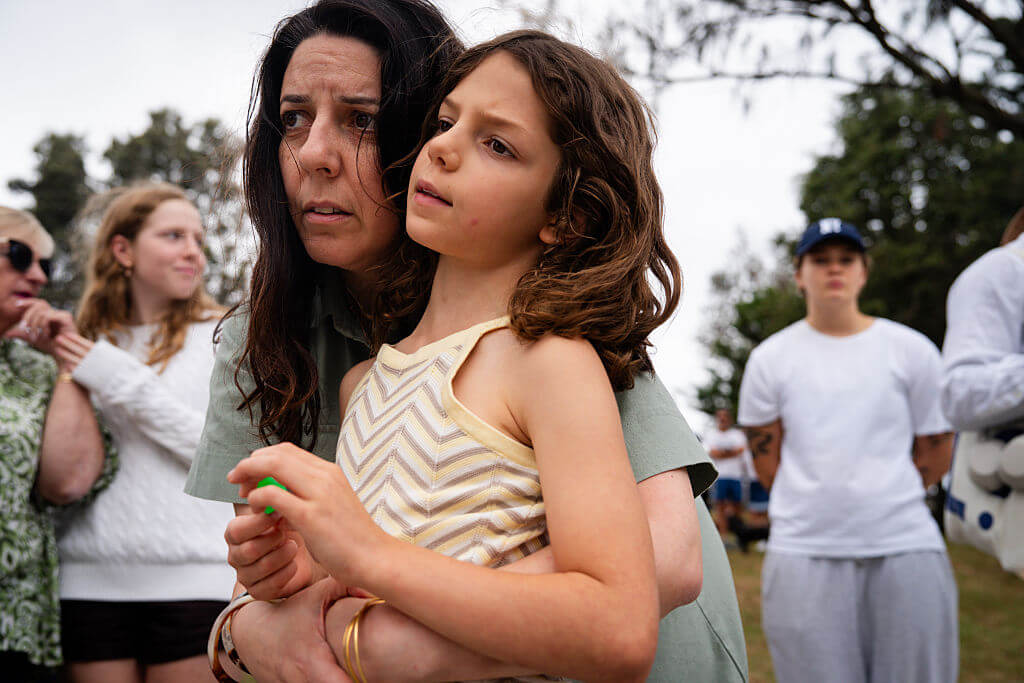New Initiative Will Integrate Hebrew School With Other Aspects of Jewish Life
Synagogue religious education, an often alienating rite of passage for generations of Jews, is in for a major transformation under an experimental program set to launch next year.
The experiment, sponsored by the Partnership for Jewish Life and Learning, will see children whose parents sign them up for synagogue Hebrew schools also exposed to Jewish camps, Jewish community centers and Jewish day schools as part of the package.
The Washington-based Partnership, which hopes to reach participation agreements with five synagogues, a day school, a JCC and one Jewish camp within the next few months, plans to incorporate all these modes of Jewish education into a more integrated and cooperative whole.
“We need to listen to our users, who are telling us they don’t love what we are giving them and would like to see something else,” said Ellen Kagen Waghelstein, the Partnership’s founding president and co-chair of the Lippman Kanfer Institute at the Jewish Education Service of North America.
But the success of this idea will depend on the willingness of each institution to relinquish some turf. And the weakest link in the equation are the synagogues that stand to lose the most if the epicenter of Jewish education shifts to other institutions.
“We shouldn’t see them as competing with each other,” said Leonard Saxe, professor of Jewish community research and social policy at Brandeis University. “The key is collaboration.”
The new initiative, aimed at achieving this communal collaboration, is the brainchild of James Hyman, CEO of the Partnership. The agency was set up in 2004 as a response to a Jewish population study conducted in the Greater Washington area that found a need for strengthening Jewish education. Hyman, whose career includes work at Michael Stienhardt’s Jewish Life Network, heading the leadership program at the Jewish Theological Seminary and work at the Mandel Center for Studies in Jewish Education, said he took the position in Washington after growing frustrated with the ability of national organizations to lead educational reform.
“I became increasingly convinced that real change will come from the local, not the national,” he told the Forward. Hyman saw the Greater Washington Jewish community as especially suitable for experimenting in Jewish education. It has about 240,000 members, half of whom can be considered affiliated with Jewish communal institutions. Fifteen percent of the area’s school-age children attend day schools.
The Partnership’s idea, which leaders of the agency stress is not yet a final product, is based on accepting that the establishment has failed to listen to the needs of a community that is becoming increasingly un-affiliated and under-affiliated. The needs of this kind of community are no longer just for the kind of Judaic learning featured at most Hebrew schools; their children require exposure to a wider swath of Jewish education.
The program acknowledges that synagogues, though less attended than in the past, are still the central institution of Jewish life in America. But it seeks to get them to share their education role. Currently, according to national surveys, synagogues, mainly through their religious school programs, provide 80% of Jewish education.
“We expect them to manufacture Jews,” Hyman said. “We drop our kids off there and expect them to produce Jews after 10 or 15 years.” Hyman stressed that under any plan, synagogues will remain the key source for religious and spiritual education, but they’ll be relieved of the broader responsibility for “manufacturing Jews.”
According to the plan, synagogue religious school education will be divided into trimesters. The first will take place at the synagogue itself, where the synagogue’s curriculum will be taught. But in the other two trimesters, students will be able to choose from courses offered by other partners — Jewish day schools, JCCs and Jewish camps. The setting for these programs, and for other classes open to the broader Jewish community, would be a neutral space that also would be welcoming for interfaith and nonaffiliated families that might feel reluctant to join a religious setting.
The Partnership believes that the program can be beneficial for all players. Day schools, praised for the quality of their curricula, will be able to expand their services to a larger audience and will better utilize their human resources; JCCs and Jewish camps will be able to provide informal education programs for more students. And synagogues will become more attractive by offering a broader education program.
But for synagogues, the plan would require some difficult adjustments.
Jewish education provides synagogues with significant income through tuition and family membership. Detaching the education experience from exclusive reliance on synagogues, and sending out children to elsewhere in the community, could deal a blow to many synagogues’ financial standing. Under the plan, families will still pay tuition to the synagogues, but that money will be used, in part, to fund educational services provided by other elements in the community.
The solution, Hyman suggested, is that if the plan works, more people will get involved in Jewish education, and there will be more need for the services that synagogues provide. “If we get more Jews excited, there will be more people in the system and more money in it,” Hyman said.
“We have a few differences on some of the assumptions Hyman is making about synagogues,” said Rabbi Marc Israel, educational rabbi at Ohr Kodesh congregation in Chevy Chase, Md., one of the synagogues considering joining the Partnership’s pilot program. Israel stressed, however, that he agrees there is a need to provide a greater variety of Jewish education opportunities.
“Is it broken?” Israel said, referring to synagogue-based Jewish education. “Not really. But we should ask ourselves, is it engaging as many students as it can?”
“It will take great courage,” Waghelstein added, “but the moment education will become better, there will be more interest in synagogues.”
Contact Nathan Guttman at [email protected]
















